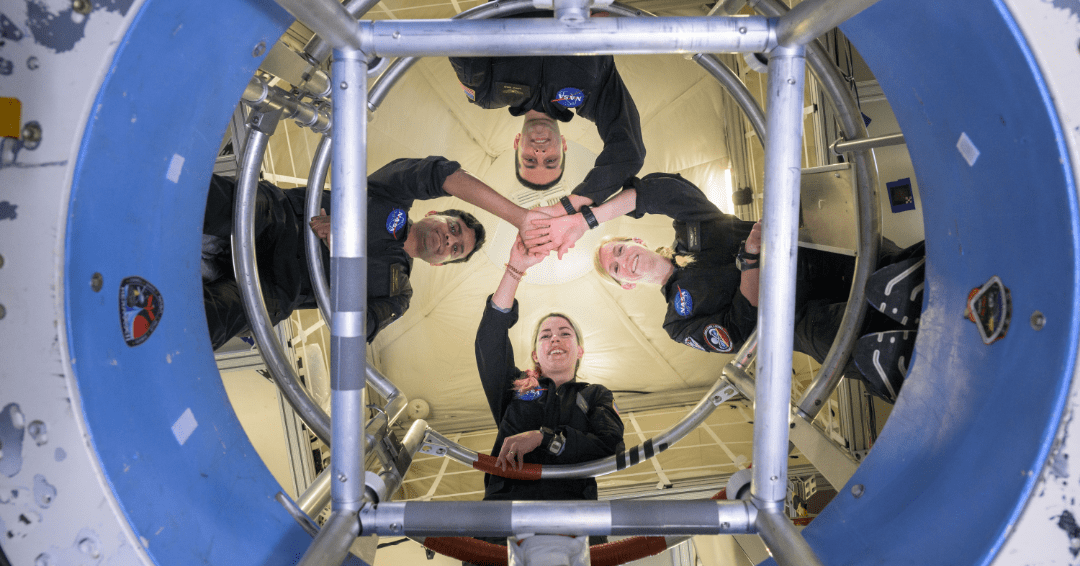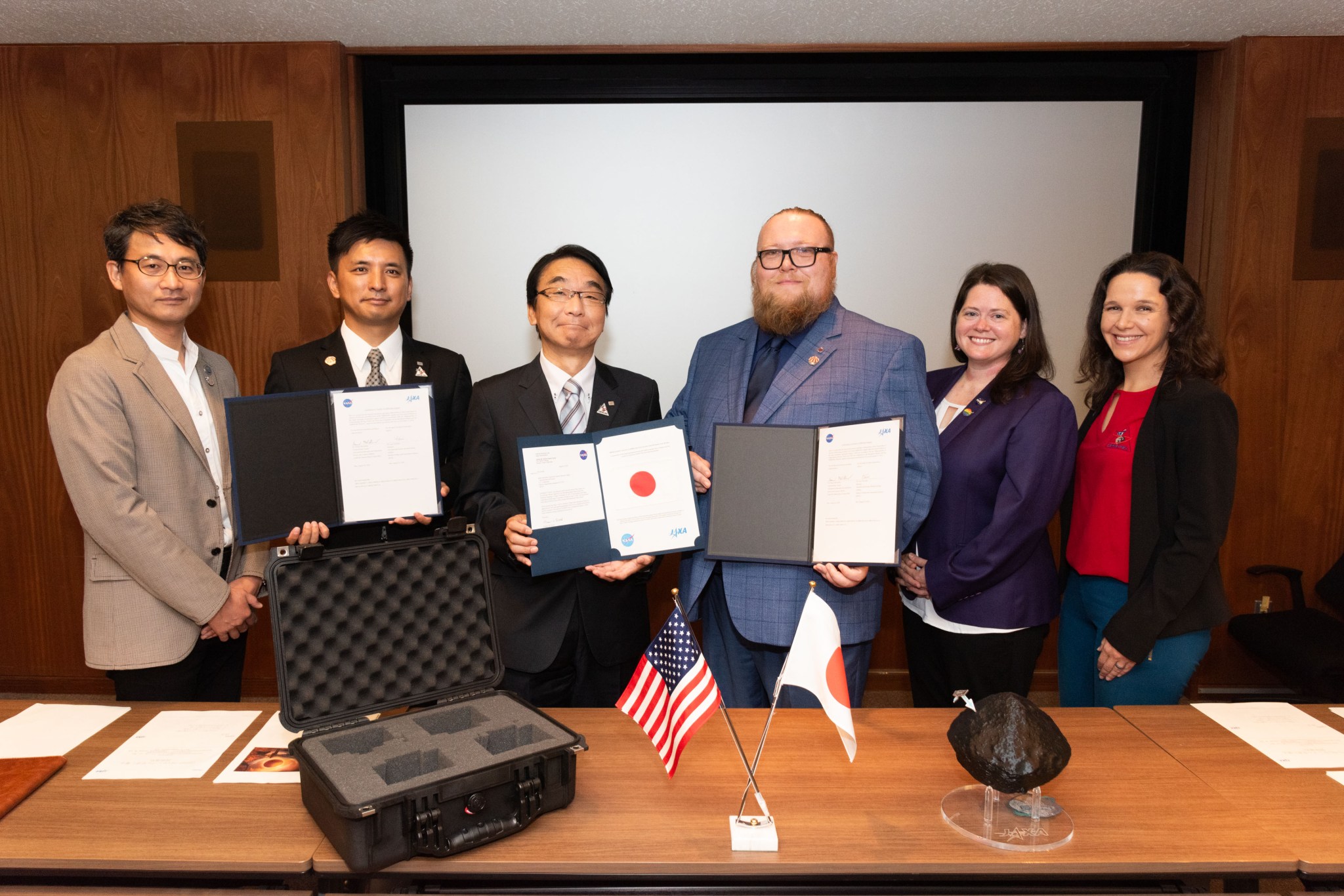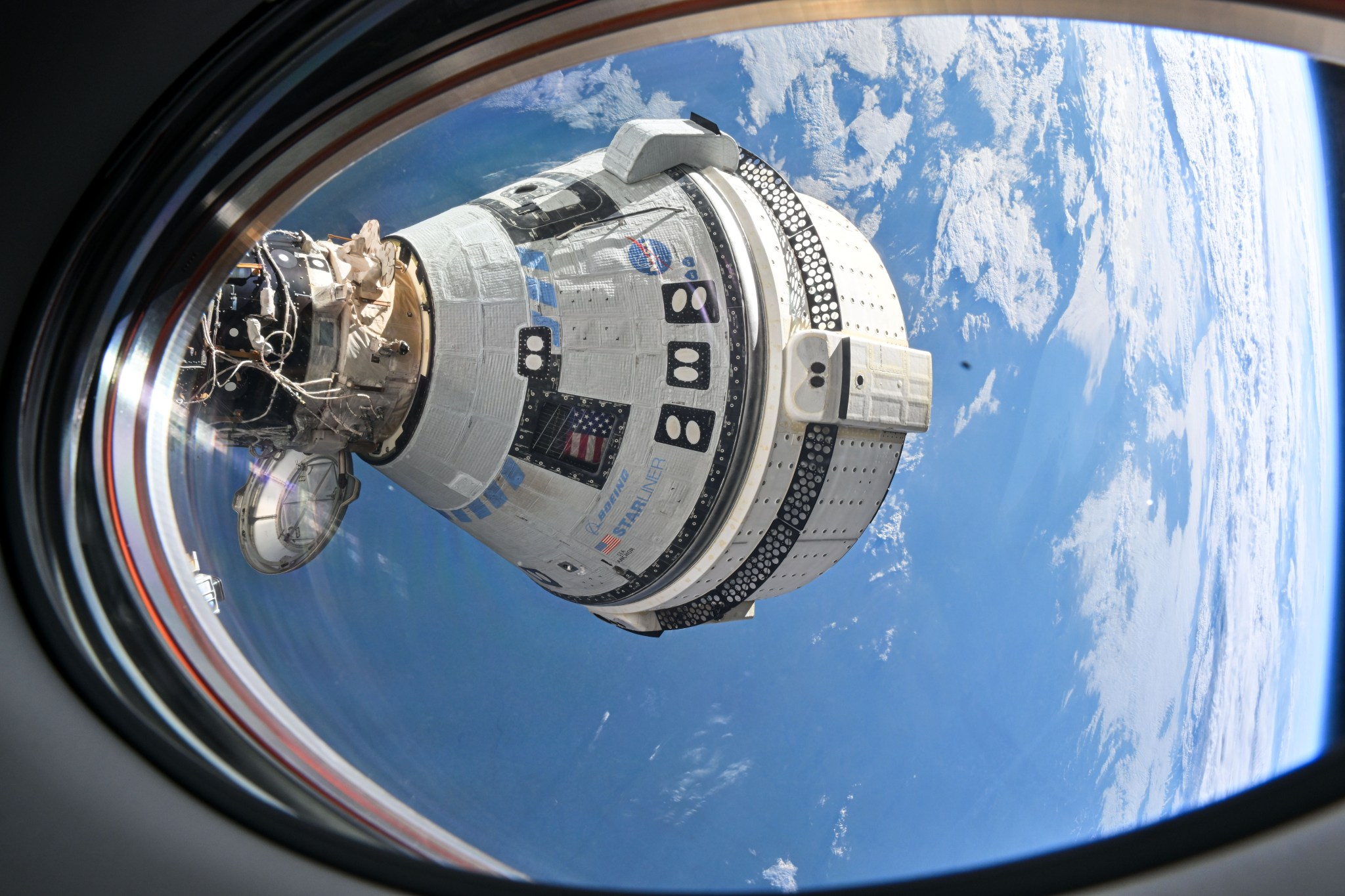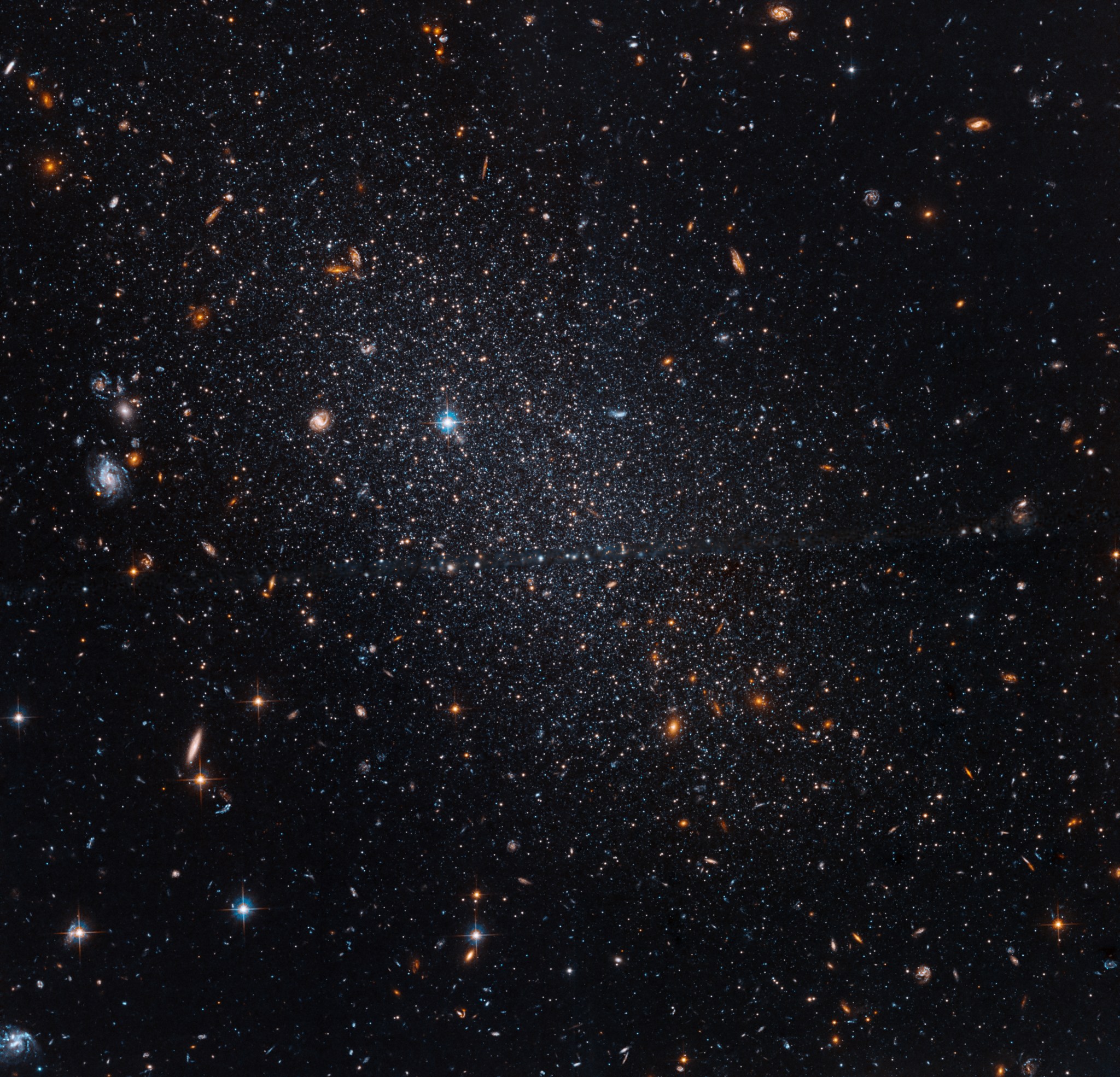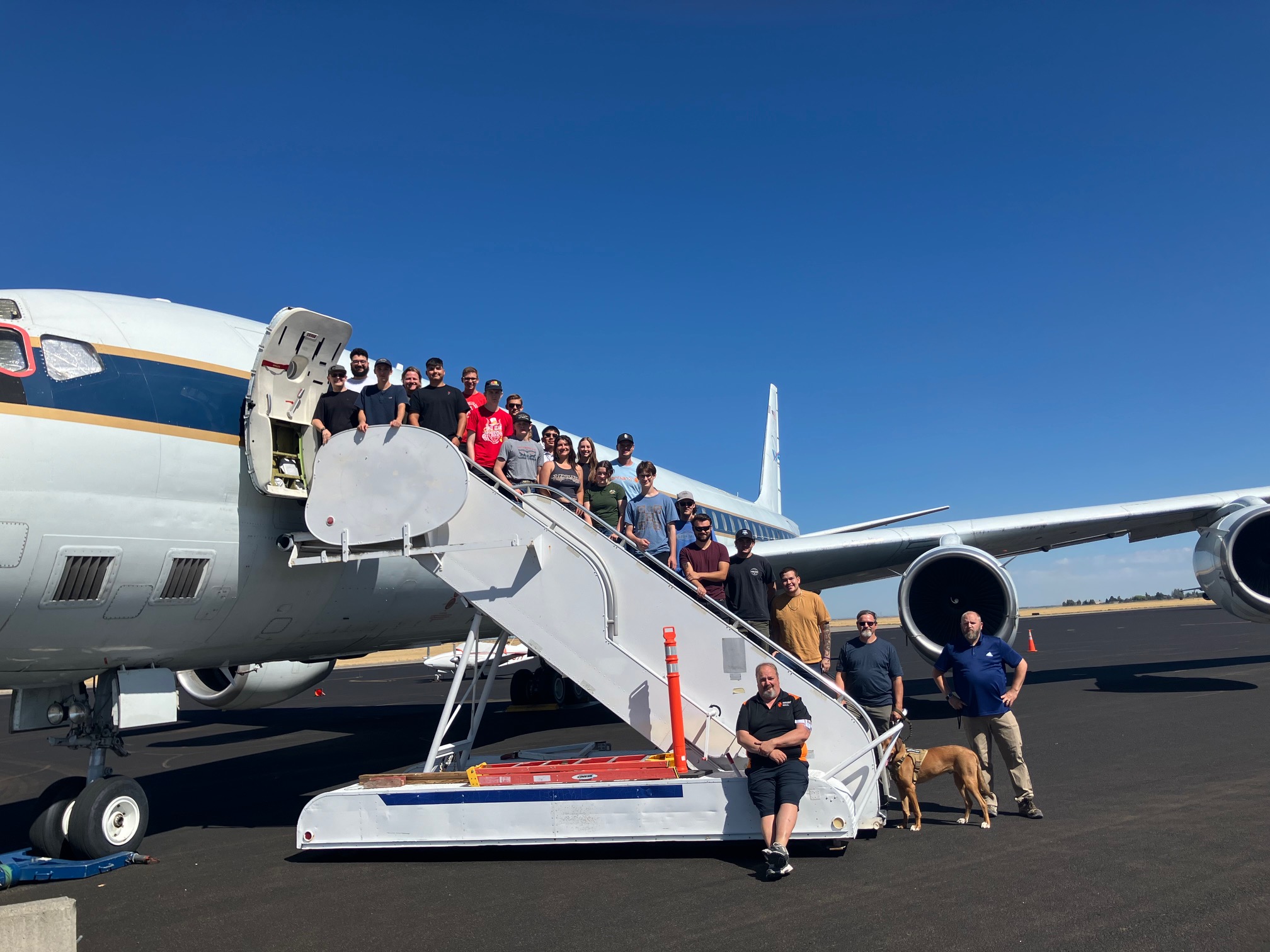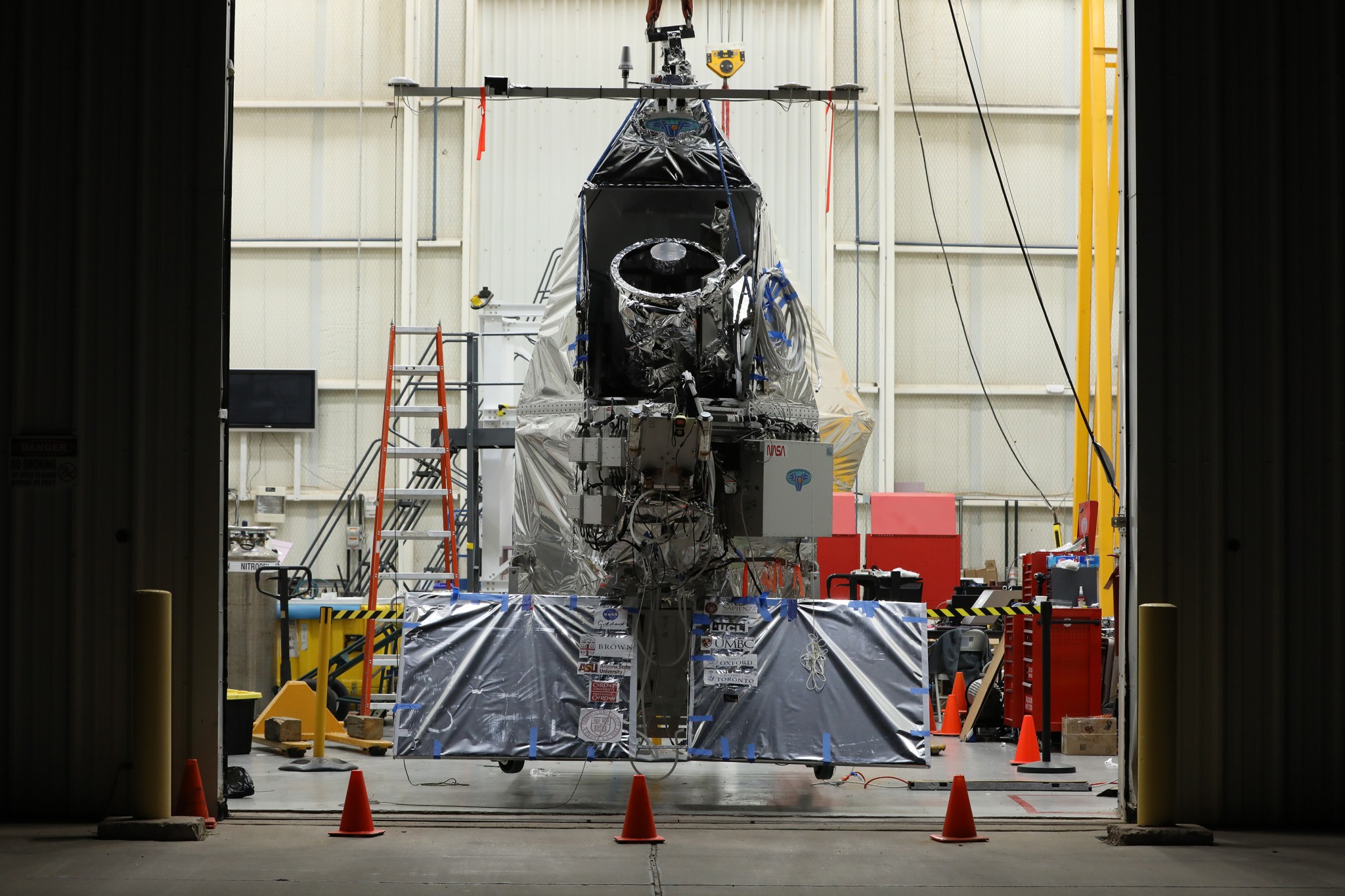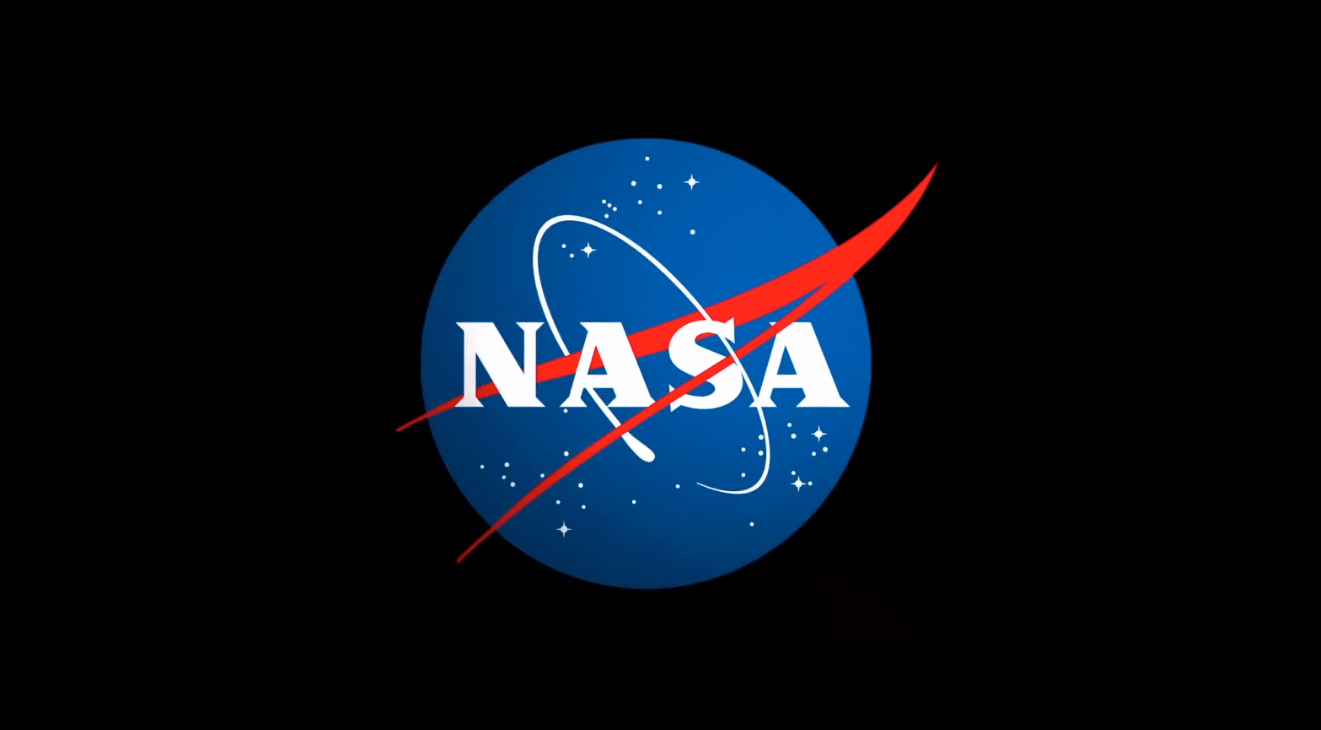The crew of the Human Exploration Research Analog’s Campaign 7 Mission 1 clasp hands above their simulated space habitat’s elevator shaft. Credit: NASA NASA is funding 11 new studies to better understand how to best support the health and performance of crew members during long-duration spaceflight missions. The awardees will complete the studies on Earth without the need for samples and data from astronauts. Together, the studies will help measure physiological and psychological responses to physical and mental challenges that astronauts may encounter during spaceflight. The projects will address numerous spaceflight risks related…
Read MoreCategory: Nasa
Nasa
NASA Shares Asteroid Bennu Sample in Exchange with JAXA
As part of an asteroid sample exchange, NASA has transferred to JAXA (Japan Aerospace Exploration Agency) a portion of the asteroid Bennu sample collected by the agency’s OSIRIS-REx mission. The sample was officially handed over by NASA officials during a ceremony on Aug. 22 at JAXA’s Sagamihara, Japan, campus. The signature exchange for the Bennu sample transfer took place on Aug. 22, 2024, at JAXA’s (Japan Aerospace Exploration Agency) Institute of Space and Astronautical Science, Sagamihara Campus. JAXA This asteroid sample transfer follows the November 2021 exchange where JAXA transferred…
Read MorePreguntas frecuentes: Estado del retorno de la prueba de vuelo tripulado Boeing de la NASA
10 min read Preparations for Next Moonwalk Simulations Underway (and Underwater) Esta historia fue actualizada por última vez el 23 de agosto.Read the article in English here. Los astronautas de la NASA Butch Wilmore y Suni Williams llegaron al laboratorio orbital el 6 de junio a bordo de la nave Boeing Starliner tras despegar el 5 de junio desde el Complejo de Lanzamiento Espacial-41 de la Estación Espacial de Cabo Cañaveral, en Florida. Durante el vuelo de Starliner a la estación espacial, los ingenieros observaron que algunos de los propulsores de…
Read MoreHubble Reaches a Lonely Light in the Dark
2 min read Hubble Reaches a Lonely Light in the Dark NASA, ESA, C. Gallart (Instituto de Astrofisica de Canarias), A. del Pino Molina (Centro de Estudios de Fisica del Cosmos de Aragon), and R. van der Marel (Space Telescope Science Institute); Image Processing: Gladys Kober (NASA/Catholic University of America) A splatter of stars glows faintly at almost 3 million light-years away in this new image from NASA’s Hubble Space Telescope. Known as the Tucana Dwarf for lying in the constellation Tucana, this dwarf galaxy contains a loose bundle of…
Read MoreSave $120 on the Celestron SkyMaster 25×100 binoculars
The Celestron SkyMaster 25×100 binoculars are now $120 off on Amazon and we rate them as the best for magnification in our guide to the best binoculars. In our Celestron SkyMaster 25×100 binoculars review, we found that it has an excellent, high magnification which makes viewing the stars and beyond possible and that’s partnered with high-quality optics, giving you crisp, clear views. While these aren’t suitable for hand-held, casual viewing, they do come with a tripod adaptor, which is where these binoculars excel. We think there’s a lot to like…
Read MoreBeyond the Textbook: DC-8 Aircraft Inspires Students in Retirement
3 min read Preparations for Next Moonwalk Simulations Underway (and Underwater) Idaho State University class of 2025 poses with their new hands-on learning tool, the DC-8 aircraft, after it was retired from NASA in May 2024 and arrived in Pocatello, Idaho. The university will use the aircraft to provide a hands-on learning experience for students in the university’s aircraft maintenance technology program. Idaho State University In May 2024, Idaho State University’s class of 2025 received a new learning tool from NASA. The DC-8 aircraft served the world’s scientific community for…
Read MoreNASA’s EXCITE Mission Prepared for Scientific Balloon Flight
5 min read NASA’s EXCITE Mission Prepared for Scientific Balloon Flight Scientists and engineers are ready to fly an infrared mission called EXCITE (EXoplanet Climate Infrared TElescope) to the edge of space. EXCITE is designed to study atmospheres around exoplanets, or worlds beyond our solar system, during circumpolar long-duration scientific balloon flights. But first, it must complete a test flight during NASA’s fall 2024 scientific ballooning campaign from Fort Sumner, New Mexico. “EXCITE can give us a three-dimensional picture of a planet’s atmosphere and temperature by collecting data the whole time the world orbits…
Read MoreNASA Selects Three New Venture-Class Launch Service Providers
Credit: NASA NASA has selected three additional companies to provide launch services for future agency missions through its VADR (Venture-Class Acquisition of Dedicated and Rideshare) contract. The companies awarded are: Arrow Science and Technology LLC of Webster, Texas Impulse Space Inc. of Redondo Beach, California Momentus Space LLC of San Jose, California The VADR contract is a firm-fixed-price, indefinite-delivery/indefinite-quantity instrument with an ordering period through Feb. 3, 2027 and a maximum total value of $300 million across all VADR contracts. NASA selected the new launch providers in accordance with VADR’s…
Read MoreWill our galaxy really collide with Andromeda? Maybe not
Astronomers have long considered it inevitable that our home galaxy, the Milky Way, will merge with the neighboring Andromeda galaxy within the next 5 billion years. However, a new simulation suggests the chance of this clash happening comes down to a coin flip — at least, within the next 10 billion years. “I would say that the popular narrative is diminished, but not eliminated,” Manasvi Lingam, an astrobiologist at Florida Institute of Technology who was not involved with the new study, told Space.com. At about 2.5 million light-years from our…
Read MoreSpaceX stacks 2nd Starship launch tower in Texas (photos)
SpaceX is gearing up for more-frequent launches of its Starship megarocket. The company currently sends Starship, the biggest and most powerful rocket ever built, aloft from an orbital launch mount at Starbase, its site near the South Texas border city of Brownsville. But SpaceX is working to install a second launch pad at the facility, and it recently notched a big milestone toward this goal. “Second launch tower stacked as the newest addition to Starbase,” the company announced via X on Wednesday (Aug. 21), in a post that featured three…
Read More